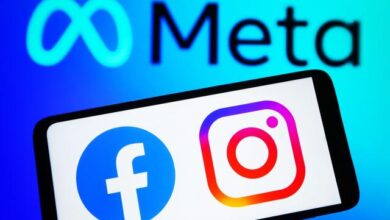Rise of hyperrealistic AI humans in South Korea
AI humans have found applications in diverse sectors, including the K-pop industry, live television, and corporate internships.

South Korea has seen rapid growth in the development and integration of artificial intelligence (AI) humans, known as virtual humans, into mainstream society. With deepfake technology, these hyperrealistic creations are performing human jobs on television and being developed for expanded roles spanning multiple industries.
Pulse9 Creates AI Humans for Corporate Needs
Pulse9 is a pioneer in South Korea’s AI human industry. The company utilizes deep learning and deepfake methods to engineer virtual humans that fulfill corporate needs.
Pulse9’s prominent creation, Zaein, demonstrates the potential and versatility of AI humans. Her role is to be the ideal artificial employee that can take on tasks without limitations.
Already, Pulse9 has partnered with major South Korean conglomerates like Shinsegae to supply tailored virtual humans. With projections of over $500 billion industry value by 2030, these AI figures have significant financial implications.
Virtual Humans Integrate into Daily Life
In South Korea, AI humans have already become integrated into various facets of society through groundbreaking projects.
For instance, universities have enrolled virtual students created by Pulse9 and other AI companies. Major corporations have also employed artificially intelligent interns to take part in training programs.
On television, virtual humans frequently appear reading news, selling products, and taking on other roles typically filled by human counterparts. Their presence often leads to the rapid sale of featured items.
K-Pop Industry Stimulates Initial Demand
The emergence of AI humans in South Korea was catalyzed largely by the demand from the K-pop industry. Virtual idols, immune to scandals and able to work 24/7, became appealing among music agencies.
However, Pulse9 seeks to expand the scope for virtual humans. The company believes AI humans can coexist and collaborate with real people across more industries, not just as fantasy celebrity figures.
Blending Deepfake Tech and Human Actors
Creating hyperrealistic AI humans involves deep learning technology. For example, Zaein’s facial features were crafted through analysis of K-pop stars’ faces over decades.
Her resulting appearance showcases delicate features, fair skin, and a slender figure. Pulse9 overlays this deepfake face onto a human actor with a matching body shape. Then, over ten different actors provide movements and talents to animate the AI.
The human collaborators remain anonymous, never revealing their actual faces during filming. This provides new opportunities for talent beyond the constraints of age or traditional physical ideals.
Future Prospects and Concerns
For now, generating artificial humans still relies heavily on real people, pending advances in independent AI mobility.
As the technology expands, discussions around regulation and ethics have emerged worldwide. However, Pulse9’s CEO Park Ji-eun remains optimistic about AI’s potential to enhance life.
Her company aims to develop more virtual assistants to help address recruitment challenges caused by South Korea’s declining birth rates. With proper use, she believes AI can fill certain gaps.
However, experts like Professor Kim Myuhng-joo, an information security expert at Seoul Women’s University caution that deepfakes make it hard to distinguish between real and fake. The technology risks being misused to manipulate and deceive.
Balancing these benefits and risks of AI will be an ongoing challenge as virtual humans continue proliferating into everyday life.
Please, also have a look into: South Korea implements new age-counting law making all citizens at least one year younger



